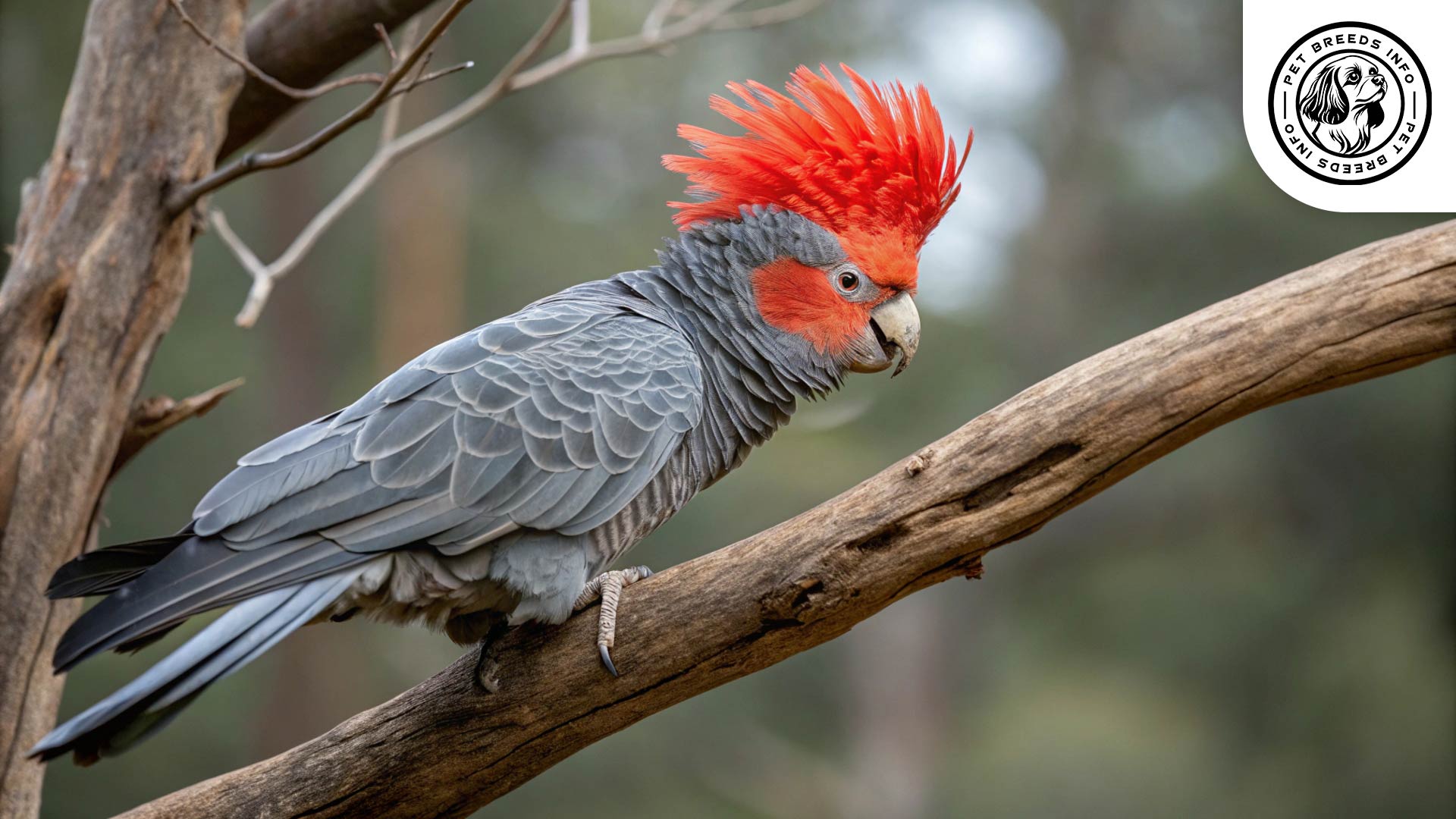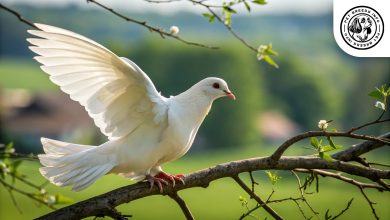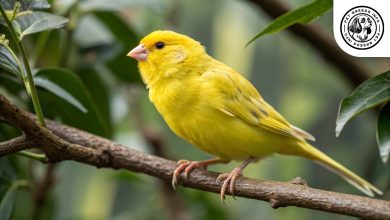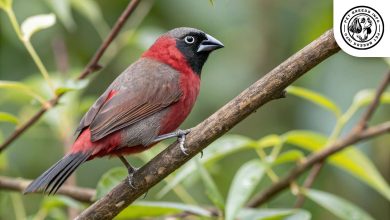Gang-gang Cockatoo Bird: Personality, Lifespan, Food & Care
General Introduction of the Breed
The Gang-gang Cockatoo (Callocephalon fimbriatum) is a unique and charismatic parrot native to Australia. This species is primarily found in southeastern regions, including New South Wales, Victoria, and the Australian Capital Territory.
Known for its distinctive appearance and gentle nature, the Gang-gang Cockatoo has an important place in Australian wildlife. Its name is derived from the Aboriginal Wiradjuri language. These birds are commonly seen in forests and woodlands, particularly in cooler, mountainous areas.
Table of Contents
| Common Name | Gang-gang Cockatoo |
| Scientific Name | Callocephalon fimbriatum |
| Origin | Southeastern regions of Australia (New South Wales, Victoria, Australian Capital Territory) |
| Size | 32-37 cm (average length), 200-300 grams (average weight), Medium-sized |
| Lifespan | Around 40 years (can live longer with proper care) |
| Talking Ability | Capable of learning various tricks and phrases with training (intelligent) |
| Colors | Males: Vibrant red head and crest. Females: Subdued gray with fine orange and yellow barring on the chest. |
| Noise Level | Not as loud or demanding as other cockatoo species (more manageable) |
| Social Behavior | Highly social, form strong bonds with owners, enjoy interactive playtime, can be shy around strangers. |
Physical Characteristics
The Gang-gang Cockatoo is a medium-sized cockatoo species with an average length of 32-37 cm and a weight ranging from 200-300 grams. Males are easily distinguishable due to their vibrant red head and crest, while females have a more subdued gray coloration with fine orange and yellow barring on the chest.
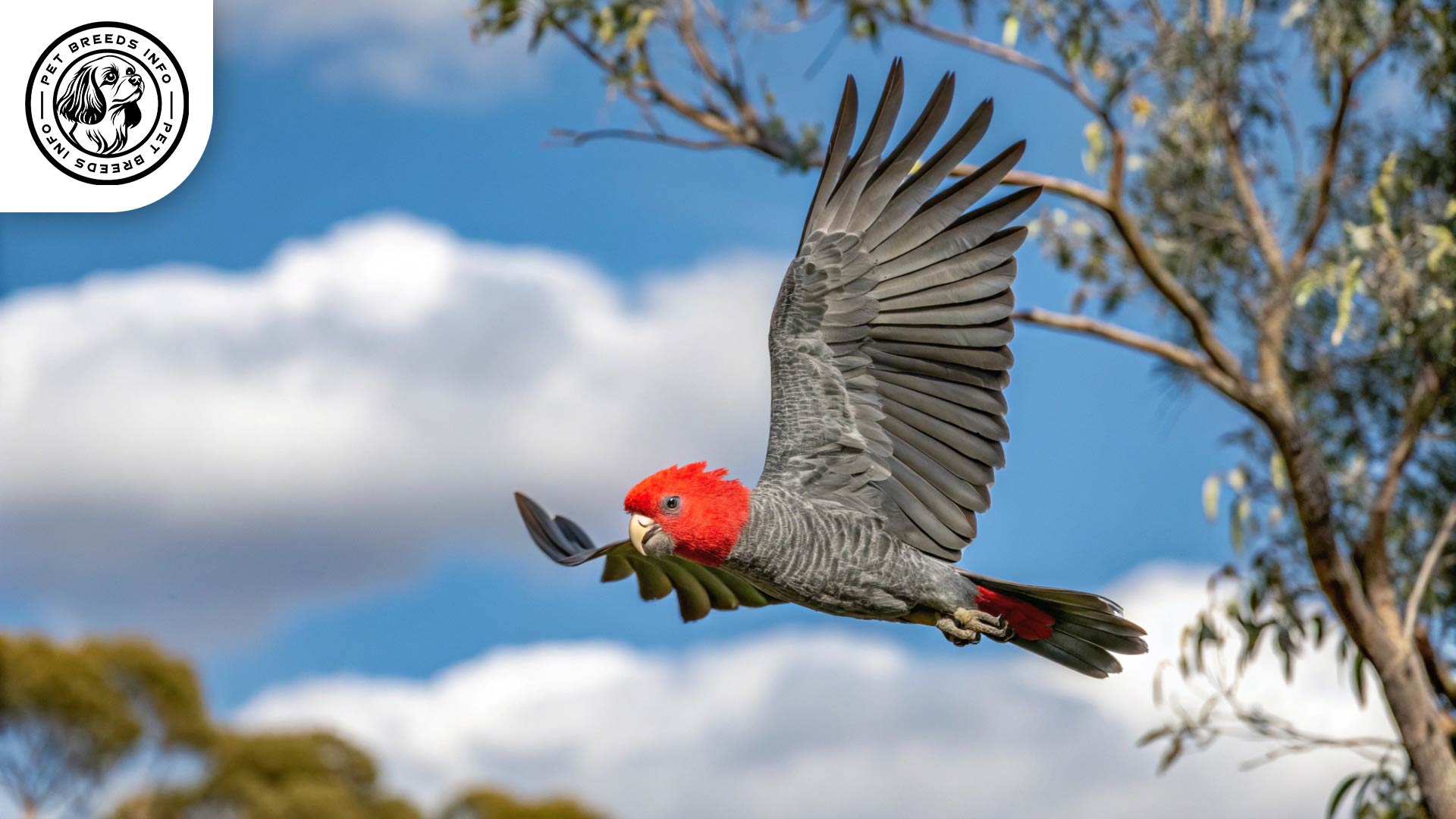
Its eyes are dark brown, adding to its expressive look. The beak is strong and designed for cracking seeds and nuts. Both males and females have short, rounded tails and relatively small, rounded wings compared to other cockatoo species.
Read More: Black-faced Firefinch
Personality and Temperament
The Gang-gang Cockatoo is known for its gentle, affectionate temperament. It is an intelligent bird capable of learning various tricks and phrases with training. However, it is not as loud or demanding as other cockatoo species, making it a more manageable pet.
These birds are highly social and form strong bonds with their owners. They enjoy interactive playtime and will often engage in chewing and climbing activities. Despite their playfulness, they can be shy around strangers and need time to build trust.
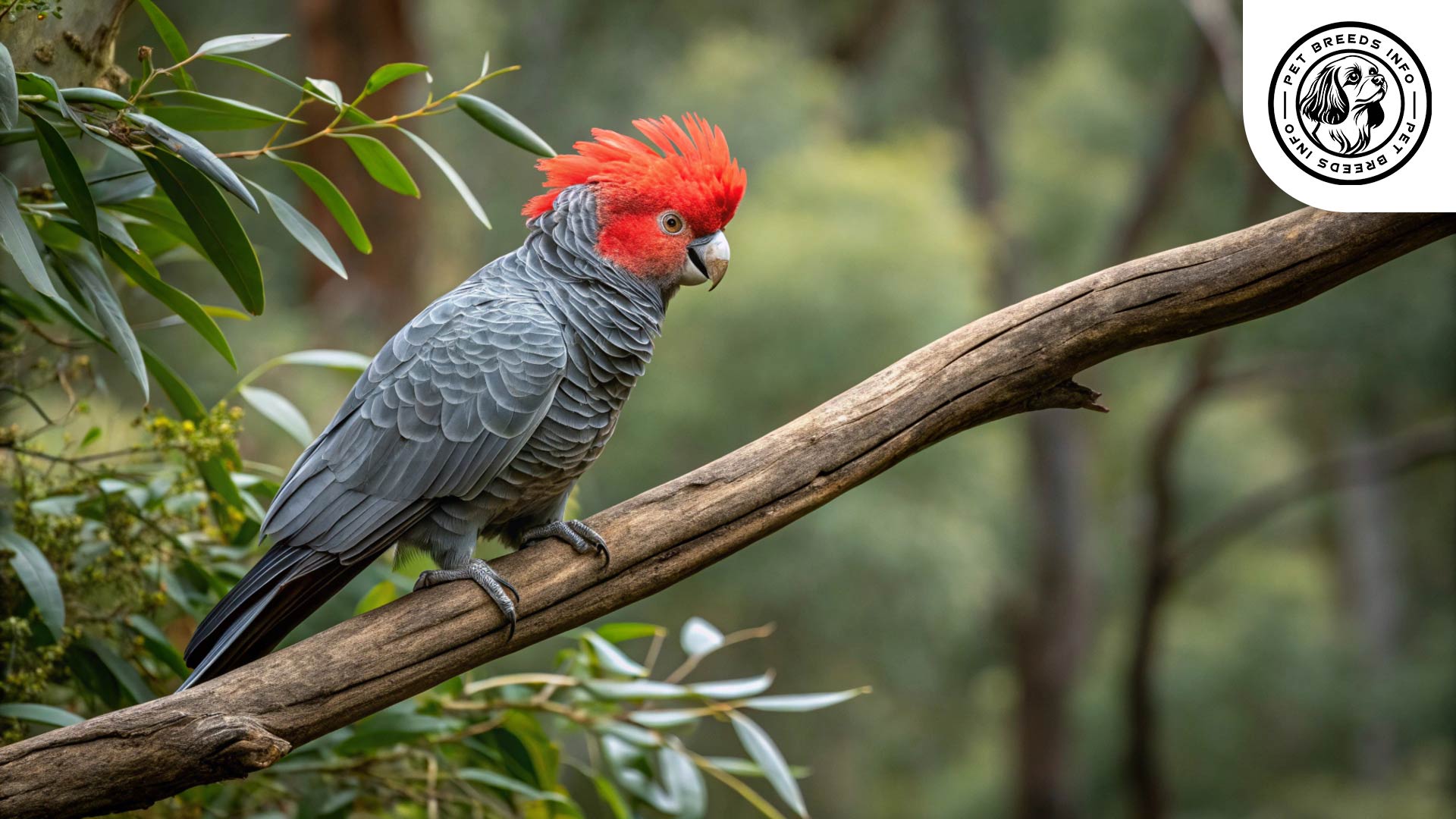
Care and Maintenance Requirements
The Gang-gang Cockatoo requires ample space to move, climb, and explore. A large aviary or spacious indoor enclosure is ideal for accommodating their activity levels. Daily out-of-cage time is also recommended for mental and physical stimulation.
They require moderate grooming, including regular nail trimming and beak maintenance. Bathing or misting helps maintain feather health, and owners should ensure a clean habitat to prevent infections. These birds tolerate mild temperatures but should be protected from extreme heat and cold.
Diet and Nutrition
The Gang-gang Cockatoo’s diet consists mainly of seeds, nuts, berries, and fruits. A balanced diet should include high-quality pellet food, fresh vegetables, and suitable fruits to provide essential vitamins and minerals.
Avoid feeding avocado, chocolate, caffeine, and foods high in fat and salt, as they can be toxic to birds. Fresh water should always be available, and occasional treats such as native eucalyptus branches can provide enrichment.
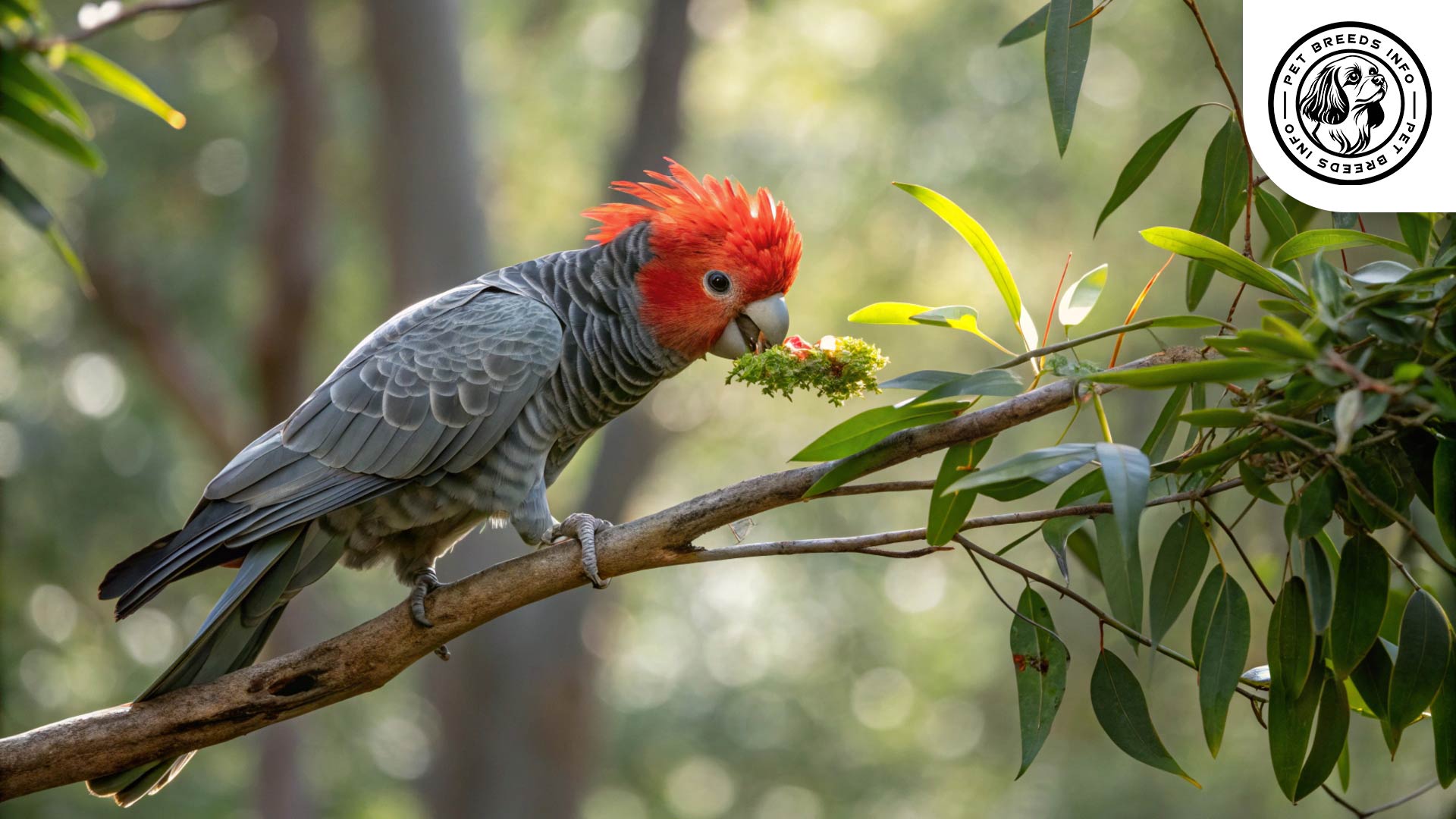
Health and Common Medical Issues
The average lifespan of a Gang-gang Cockatoo is around 40 years, although they can live longer with proper care. They are susceptible to common bird health issues such as feather plucking, respiratory infections, and psittacine beak and feather disease.
Regular veterinary check-ups, a clean environment, and a healthy diet are crucial for preventing illnesses. Owners should monitor for signs of lethargy, appetite changes, or difficulty breathing, which may indicate health problems.
Read More: Black-headed Caique Bird
Training and Behavior Management
Training a Gang-gang Cockatoo is relatively easy due to its intelligence. Positive reinforcement techniques such as rewards and praise work well in teaching commands and tricks.
Socialization from a young age can help prevent shyness and improve interaction with humans and other pets. They respond well to routine-based training, and providing interactive toys can prevent boredom and destructive behaviors.
Interaction with Other Animals and Humans
The Gang-gang Cockatoo forms strong bonds with its human caretakers and enjoys companionship. It is generally suited for families and individuals who can dedicate time to socialization and interaction.
While they can coexist peacefully with other birds, caution is needed when introducing them to different species. Proper supervision and controlled interactions are necessary to ensure harmony in multi-pet households.
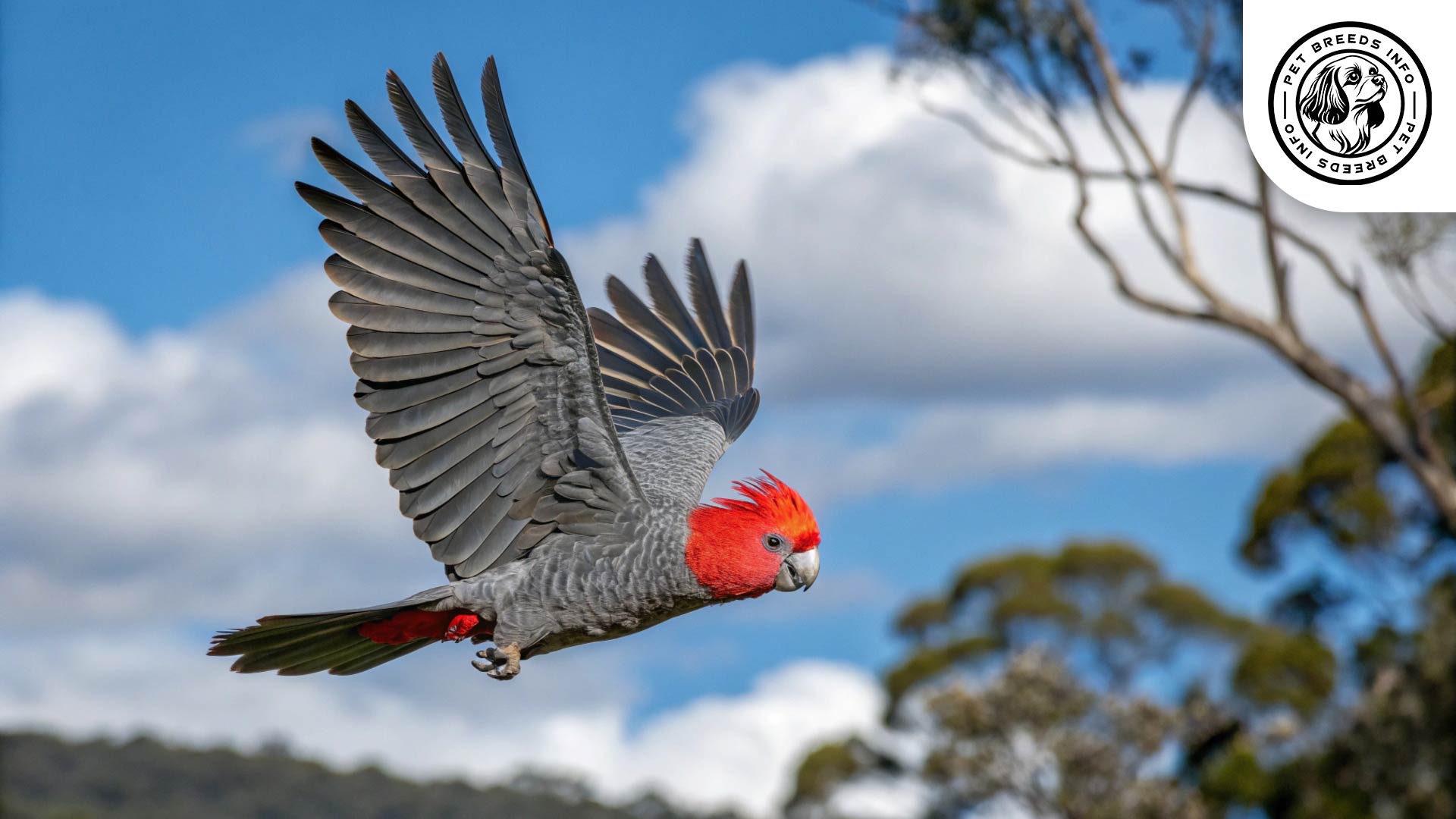
Price and Availability
Gang-gang Cockatoos are not as commonly available as other cockatoos, making them relatively expensive. Prices vary based on age, breeder reputation, and region, but they typically range from $2,000 to $5,000 USD.
Potential owners should seek reputable breeders or specialized bird adoption centers. Researching legal regulations is important, as some areas have restrictions on keeping this bird as a pet due to conservation efforts.
Read More: Blue and Gold Macaw Bird
Conclusion and Final Thoughts
The Gang-gang Cockatoo is a wonderful companion for bird enthusiasts who can meet its social and environmental needs. It thrives in an interactive home with plenty of enrichment and care.
Prospective owners should consider the long lifespan, dietary requirements, and space needs before committing to this species. With proper attention and love, the Gang-gang Cockatoo can be a delightful and affectionate pet.
FAQ
What is a key physical difference between male and female Gang-gang Cockatoos?
Males have a vibrant red head and crest, while females are mostly gray with orange and yellow barring on their chest.
Are Gang-gang Cockatoos loud birds?
No, they are known for being less loud and demanding compared to other cockatoo species.
What is the typical lifespan of a Gang-gang Cockatoo?
Their average lifespan is around 40 years, but they can live longer with good care.
What does the diet of a Gang-gang Cockatoo mainly consist of?
Their diet mainly includes seeds, nuts, berries, and fruits.
Do Gang-gang Cockatoos enjoy interacting with their owners?
Yes, they are highly social birds that form strong bonds with their owners and enjoy interactive playtime.
